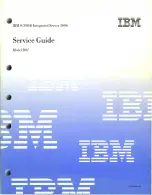
Rev. 1.00
180
September 11, 2018
Rev. 1.00
181
September 11, 2018
HT45F4050
A/D NFC Flash MCU
HT45F4050
A/D NFC Flash MCU
READY1 State
When a REQA or WUPA command is received by the NFC tag device in the IDLE state, the NFC
tag device will exit the IDLE state and then enter the READY1 state. However, the NFC tag device
can exit the HALT state and enter the READY1 state only if a WUPA command is received.
There are three methods to exit the READY1 state. The first one is to read the data directly from
page 0x00
h
~0x0F
h using the READ command. Then the NFC tag device will exit the READY1
state and then enter the ACTIVE state.
The second one is to resolve the first three UID bytes, grouped into the Cascade Level 1, using the
Anticollision command. The NFC reader will directly select the specific first three resolved NFC tag
UID bytes using the Select CL1 command
and a Select Acknowledge (SAK) signal with a value of
04h will be sent by the tag device to the NFC reader. After that the NFC tag will exit the READY1
state and then enter the READY2 state.
Note that the NFC tag device will exit the READY1 state
followed by entering the IDLE or HALT state if the device receives a Select CL1 command with a
parity error.
The last one is where invalid commands are received. When a command, except
for
the READ (page
0x00h~0x0Fh), Anticollision CL1 and Select CL1 commands, is received in the READY1 state,
the command will be interpreted as an error and the NFC tag device will exit the READY1 state.
The NFC tag device will then go back to the IDLE or HALT state dependent upon the previous
state where the tag device remains
.
The tag device with a collided UID will be excluded during the
Anticollision command execution and then go back to the IDLE or HALT state.
Note that if more than one NFC tag device is in the NFC field, the READ command accessed from
page 0x00h~0x0Fh will cause a collision due to the different UID data bytes transmitted by these
NFC tag devices.
READY2 State
When a Select CL1 command is received by the NFC tag device in the READY1 state, the NFC tag
device will exit the READY1 state and then enter the READY2 state.
There are three methods to exit the READY
2
state. The first one is to read the data directly from
page 0x00
h
~0x0F
h using the READ command. Then the NFC tag device will exit the READY
2
state and then enter the ACTIVE state.
The second one is to resolve the second
four UID bytes, grouped into the Cascade Level
2
, using
the Anticollision command. The NFC reader will directly select the specific second four resolved
NFC tag UID bytes using the Select CL
2
command
and a Select Acknowledge (SAK) signal with
a value of 0
0
h will be sent by the tag device to the NFC reader. After that the NFC tag will exit
the READY
2
state and then enter the ACTIVE state.
Note that the NFC tag device will exit the
READY
2
state followed by entering the IDLE or HALT state if the device receives a Select CL
2
command with a parity error.
The last one is where invalid commands are received. When a command, except
for
the READ (page
0x00h~0x0Fh), Anticollision CL2 and Select CL
2
commands, is received in the READY
2
state,
the command will be interpreted as an error and the NFC tag device will exit the READY
2
state.
The NFC tag device will then go back to the IDLE or HALT state dependent upon the previous
state where the tag device remains.
The tag device with a collided UID will be excluded during the
Anticollision command execution and then go back to the IDLE or HALT state.
Note that if more than one NFC tag device is in the NFC field, the READ command accessed from
page 0x00h~0x0Fh will cause a collision due to the different UID data bytes transmitted by these
NFC tag devices.
















































